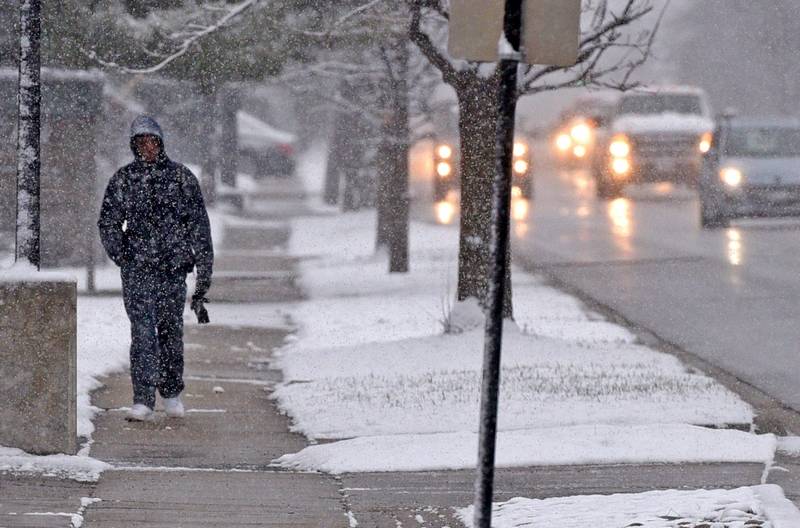
Constable: Do you feel spring in your bones?
The record-high temperature for today is 88 degrees, set it 1976. The record-low of 17 degrees was set in 1875, In 1961, this date brought us a half-inch of snow.
We’ll be closer to the latter two today, according to meteorologists, grandpa’s trick knee and Aunt Edna’s back.
Many people claim their aches and pains are better predictors of the weather than all those charts, graphs and Doppler radar reports on the evening news. They know a weather change is coming because their aches and pains tell them so.

“It’s actually pretty true, but it’s not like most people think. Most people attribute it to temperature, but it’s actually due to barometric pressure.”
Dr. Wajde Dabah, a board-certified anesthesiologist and pain medicine specialist with Pain Therapy Associates
Barometric pressure is a measurement of the air from sea level to the upper edge of the earth’s atmosphere. The science of how changes in the barometric pressure affect our bodies is pretty iffy, with some people reporting pain when barometric pressure falls and others saying a rise aggravates their aches. One factor that makes evaluations tricky is that pain is subjective. An ache that one person says is awful might not register a complaint from someone for whom pain has become acceptable. One study suggested that people didn’t complain about their aches on sunny days, even though the pain probably was just as bad then as it was on a cold and rainy day.
A 2010 study by the European Federation of International Association for the Study of Pain Chapters found “evidence suggesting that pain in some individuals is more affected by the weather than in others.” Not determining an ironclad scientific explanation for the link between pain and weather, the study only concluded that “the hypothesis that weather changes might significantly influence pain reporting in clinical care and research in some patients cannot be rejected.”
Some theories suggest a change in atmospheric pressure affects swelling in the joints. But there is no proof of that.
When people predict the weather by saying, “I feel it in my bones,” there is some truth to that
Dr. Wajde Dabah, a board-certified anesthesiologist and pain medicine specialist at Pain Therapy Associates
It has to do with pain receptors,” offers Dabah. “Bones and skin are the most sensitive tissues to pain, so when they say, ‘I feel it in my bones,’ they really do. People can pick up on it 12 or 24 hours before.”
For veteran AccuWeather meteorologist Michael Steinberg, winner of the 2016 Award for Outstanding Contribution to the Advance of Applied Meteorology from the American Meteorological Society, many factors go into his service’s “Arthritis Index” available at AccuWeather.com. Today’s prediction that it will be warmer and drier should be “beneficial weather for arthritis pain,” AccuWeather forecasts. But Wednesday’s Arthritis Index calls for “extreme risk of arthritis pain.”
“The primary factors that are considered in the Arthritis Index are current weather factors such as temperature, pressure, humidity, and precipitation, and changes in weather factors such as pressure, temperature, and humidity,” Steinberg says. He and his team develop algorithms that incorporate all the factors, determine the importance of each and come up with a value on a scale of zero to 10.
The calendar says mid-April, but it feels like early February. Maybe Cubs’ slugger Anthony Rizzo can predict the weather with his sore back. Maybe your grandma’s knee can tell us if the thermometer will top 50 degrees this weekend. Who knows?
But if you spot a flock of Golden-winged Warblers getting out of town, you might want to follow them. Science has shown those birds can detect the infrasound made by approaching tornadoes long before meteorologists warn us.
Leave a reply